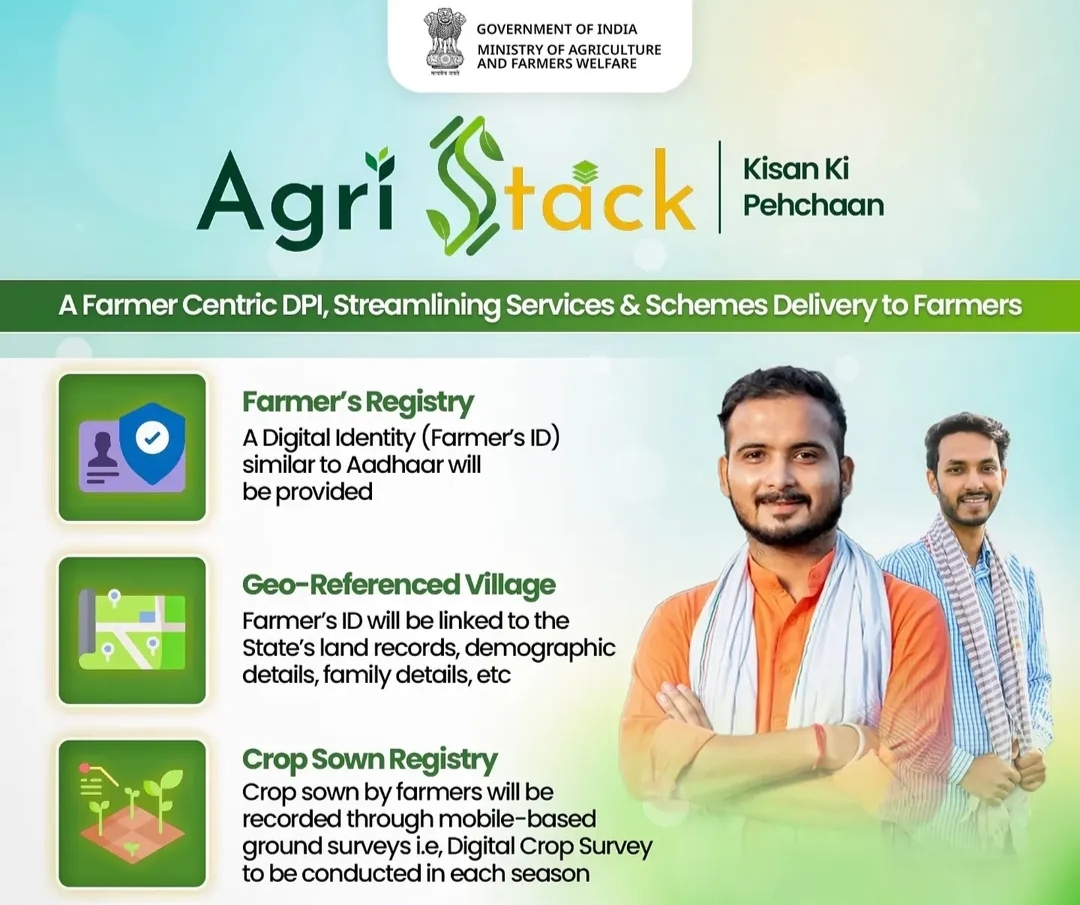AgriStack

Agristack
AgriStack
In recent years, the Indian government has undertaken significant digital initiatives to modernize agriculture and improve the lives of farmers. One of the most ambitious projects in this direction is AgriStack—a comprehensive digital infrastructure designed to integrate agricultural data, enhance productivity, and streamline access to essential services. By leveraging advanced technology and data analytics, AgriStack aims to create a more efficient, transparent, and farmer-friendly ecosystem.
This blog delves into what AgriStack is, its key components, objectives, benefits, and how it is shaping the future of Indian agriculture.
What is AgriStack?
AgriStack is a centralized digital platform that compiles crucial data related to farmers, their landholdings, cropping patterns, and agricultural activities. This vast repository enables better decision-making and facilitates seamless access to various government schemes, financial support, and advisory services.
The primary goal of AgriStack is to digitally empower farmers by providing them with real-time, data-driven insights. With the use of cutting-edge technologies like satellite imagery, artificial intelligence (AI), machine learning (ML), and blockchain, AgriStack ensures transparency, reduces red tape, and enhances agricultural productivity.
Key Objectives of AgriStack
The AgriStack initiative has been designed with a set of clear objectives that aim to transform the agricultural landscape in India:
1. Creating a Unified Digital Farmer Identity
• Farmers will receive a unique digital ID, linked to their Aadhaar number and land records.
• This ID will help ensure accurate identification and prevent fraudulent claims when accessing government schemes.
2. Simplifying Access to Agricultural Services
• Farmers can easily avail themselves of government subsidies, loans, crop insurance, and advisory services without bureaucratic delays.
• Digital integration eliminates the need for excessive paperwork and speeds up approval processes.
3. Enabling Data-Driven Decision Making
• By analyzing historical and real-time agricultural data, AgriStack provides personalized insights into crop selection, pest control, irrigation methods, and market trends.
• This helps farmers make informed decisions that maximize their yield and income.
4. Promoting Financial Inclusion
• AgriStack connects farmers with banks, financial institutions, and microfinance organizations for easy credit access.
• Digital financial records improve farmers’ eligibility for low-interest loans and grants.
5. Enhancing Agricultural Innovation
• AgriStack serves as an open platform where agri-tech startups, researchers, and businesses can develop and test innovative solutions.
• By fostering collaboration between different stakeholders, it drives technological advancements in farming.
Core Components of AgriStack
AgriStack is structured around several essential components that enable its seamless operation:
1. Farmer and Farmland Registries
• This digital registry links farmers to their land holdings, ensuring efficient service delivery and accurate targeting of agricultural benefits.
• It helps prevent land fraud and ensures proper distribution of subsidies.
2. Unified Farmer Service Interface (UFSI)
• UFSI is a standardized API framework that enables secure and consent-based data exchange between farmers, government agencies, banks, and agri-tech firms.
• It ensures that only authorized stakeholders can access sensitive agricultural data.
3. Crop Sown Registry
• This component tracks the crops grown across different regions using satellite images, remote sensing, and AI-based monitoring systems.
• The data is used for forecasting yield, predicting market trends, and managing food supply chains.
4. AgriStack Sandbox
• The sandbox is an experimental environment where startups, developers, and researchers can test new agri-tech solutions without affecting real-world farming operations.
• It accelerates the adoption of smart farming technologies by providing a controlled testing ground.
Benefits of AgriStack
AgriStack is a game-changer for various stakeholders in the agricultural sector. Here’s how it benefits different groups:
1. Empowering Farmers
• Direct access to government subsidies, financial aid, and insurance schemes.
• Personalized agricultural advisories on weather forecasts, soil health, and pest control.
• Reduction in paperwork, leading to faster approvals and payments.
2. Strengthening Policy Making
• Accurate agricultural data allows policymakers to design better schemes and assess their impact.
• Enables data-backed decision-making to improve food security and rural development.
3. Boosting Agri-Tech and Agribusiness
• Facilitates the development of AI-powered farming tools, drone-based crop monitoring, and precision agriculture.
• Provides a structured database for businesses to analyze farmer needs and create tailored solutions.
4. Enhancing Food Supply Chains
• By tracking crop patterns and yields, AgriStack improves market forecasting and logistics planning.
• Reduces post-harvest losses and ensures efficient distribution of agricultural produce.
Recent Developments in AgriStack Implementation
As of 2025, AgriStack is being actively implemented across various Indian states. For example:
• Maharashtra: The state government is working to integrate over 1.19 crore farmers into AgriStack. The initiative links Aadhaar numbers with land records, making it easier for farmers to access government schemes.
• Karnataka and Telangana: Pilot projects have been launched to digitize farm records and provide farmers with real-time crop advisories.
• Punjab and Haryana: Authorities are exploring the use of drone-based crop monitoring under AgriStack to enhance agricultural productivity.
The Indian government is also collaborating with private agri-tech firms and international organizations to refine the AgriStack ecosystem further.
Challenges and Concerns
While AgriStack has immense potential, it also faces certain challenges:
• Data Privacy and Security: Since AgriStack stores sensitive farmer information, ensuring data security and preventing misuse is crucial.
• Digital Literacy: Many small-scale farmers lack access to smartphones and the internet, which may hinder adoption.
• Land Record Discrepancies: Inaccurate or outdated land records could create issues in farmer identification and service delivery.
To overcome these challenges, the government is focusing on farmer education programs, data security policies, and improved digital infrastructure in rural areas.
Conclusion
AgriStack is set to revolutionize Indian agriculture by leveraging technology, data analytics, and digital integration. By providing farmers with real-time insights, easy access to financial aid, and smart farming solutions, it aims to enhance productivity, profitability, and sustainability.
As the government continues to refine and expand AgriStack, it is crucial to ensure data privacy, digital inclusivity, and transparency to maximize its benefits. With the right approach, AgriStack can lead India towards a smarter, more resilient, and digitally empowered agricultural sector.
Would you like to explore more about AgriStack’s impact on specific crops or regions? Let us know in the comments!





